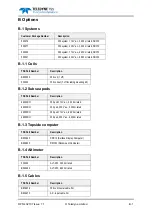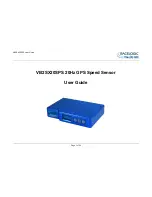
DPN 402197 Issue 7.1
© Teledyne Limited
C- 3
that the measurement range of the 350 system decreases with the distance from
the point of tone injection.
C.1.2.3 Fibre-optic cables
In most cases, fibre-optic cables carry at least one conductor to supply power for the repeaters or to
act as a dedicated tone-carrying facility.
Alternatively, when there is no other conductor available, the armoured covering of a fibre-optic cable
can be used to carry the tone, provided it is insulated from ground.
The owner of the fibre-optic cable will usually specify the maximum level of tone current that the cable
can tolerate. This is to limit the amount of noise that may be generated within repeaters along the
cable.
NOTE
The 350 system cannot be used to survey a fibre-optic cable unless the cable can
carry an electrical tone through a conductive core or through its insulated
armoured covering.
C.1.2.4 General connection requirements
❐
Always use good grounding connections throughout the installation to avoid introducing mains
related frequencies onto the cable.
❐
You must separate the return path from the outgoing tone current. Do not use a separate con-
ductor in the same cable to provide a return path.
❐
Do not allow the tone current to exceed the maximum rating for cable circuits that have repeat-
ers.
C.1.3 Seawater Return Path
If the far end of the cable is in the water, then the sea water itself can provide the signal return path. To
use this method, you should attach a sacrificial anode to the exposed cable core and seal the cable
against water ingress at the far end.












































